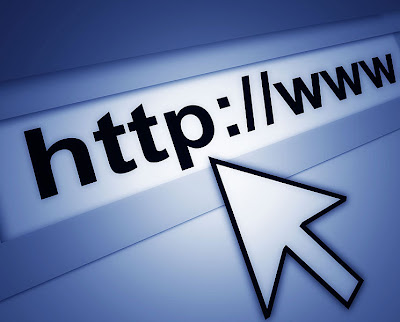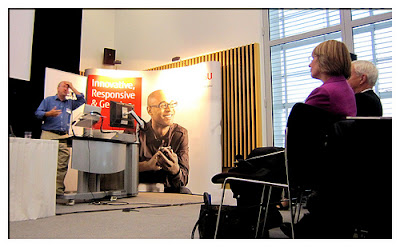From Dial Up to 4G: A Look at the Internet's Evolution
To many people, the Internet still seems like a relatively new technology. While the Internet's roots are traceable all the way back to 1958, it didn't become a common component of most homes until about the past two decades. But even in that short amount of time, the Internet has evolved dramatically from slow, much-maligned dial-up connections to today's super-fast 4g networks.
[post_ad]
The World Wide Web Goes Online in 1993
 |
| Image via Wikimedia Commons |
The World Wide Web and the Internet are actually two different things. The Internet is a network of computer networks, while the World Wide Web is often defined as a network of Internet websites. Although the first email was sent in the 1970s, The World Wide Web was first introduced in 1993.
The first Internet connections were dial-up connections, which ran through the telephone lines at speeds of about 56k. Not only did this make it painfully slow to download anything, but it tied up the telephone line calls couldn't be made or received while connected unless the user had call-waiting services. At this speed, it would take anywhere from 10 minutes to several hours to download a 3.5MB song.
Broadband Modems Increase Access Speeds
 |
| Image via Flickr by philcampbell |
In the early 2000s, broadband was a welcome introduction. This increased connection speeds and allowed users to use both the telephone line and Internet connection simultaneously. Broadband has variable speeds, but averages about 6.7 Mbps. Broadband connections rely on a physical connection between the device and the telephone or cable line. Wireless (Wi-Fi) connections via routers also became increasingly common during at the beginning of the 21st century.
3G and 4G Make It Possible to Connect from Anywhere
 |
| Image via Flickr by USDAgov |
Over the past several years, Wi-Fi has become so highly demanded that many public locations, such as coffee houses and libraries, offer Wi-Fi services free. With the rise in mobile devices came consumer demand to receive Internet access in locations where it wasn't previously possible, such as the beach or even in the car.
That's where 3G and 4G networks come into play. Today's 3G and 4G Internet network connectivity both enable users to use the Internet from mobile devices via the same radio towers that provide cell phone voice service.
Better Connection Speeds Lead to Richer Content
 |
| Image via Flickr by IvanWalsh.com |
The evolution of Internet connection speeds means users can download content faster. That enables designers and publishers to provide a greater variety of content, including photos, audio and video, which users can access in reasonable timeframes. This rapid download capabilities is revolutionizing the way people interact, both in social and work environments.
The ability to instantly upload photos, videos, and other content makes share-able marketing easier than ever. Mass media is able to reach a larger audience in shorter times than ever before.
The rise in 3G and 4G networks has led to a focus on mobile-optimized websites, or those that display content which fits on the smaller screens of smart phones and tablet PCs. Even today's mobile phones and other devices are capable of downloading and streaming rich content, such as videos.
The Future Implications
 |
| Image via Flickr by Don Moyer |
It is hard to predict what the future will hold for increased internet speeds. Assuming that the connection reach spreads and speeds increase it is interesting to speculate about the implications of such advancements. Is it fair to assume our society will slowly move away from personal interactions because of a dependency to social media and digital communities? An argument for that can already be made based on the soaring popularity of sites like Facebook or Twitter to name a few.
Will this increased accessibility and opportunity restrict personal privacy or freedoms? The rapid evolution of the internet has forced government to begin regulating activities to provide alleged safety. This regulation plays into issues on privacy. Is it ethical for the government to have access to personal information on your computers? As the internet continues to grow so will these regulations. In an enterprise that is always changing, it is impossible to generate universal standards and the future regulations could prove to be impeding on personal freedoms.
Internet has come a long way since that first email back in the 1970s. What started out as a slow, primarily text-based form of media has evolved into a primary source of consumer information, entertainment and news. How has it changed your life?
About the Author:
DJ Miller is a graduate student at the University of Tampa. He loves soccer, Xbox, and watching movies. You can follow him @MillerHeWrote.
Get the best tips from Softechnogeek in your inbox, free!
From Dial Up to 4G: A Look at the Internet's Evolution
 Reviewed by Unknown
on
Saturday, March 23, 2013
Rating:
Reviewed by Unknown
on
Saturday, March 23, 2013
Rating:
 Reviewed by Unknown
on
Saturday, March 23, 2013
Rating:
Reviewed by Unknown
on
Saturday, March 23, 2013
Rating:











